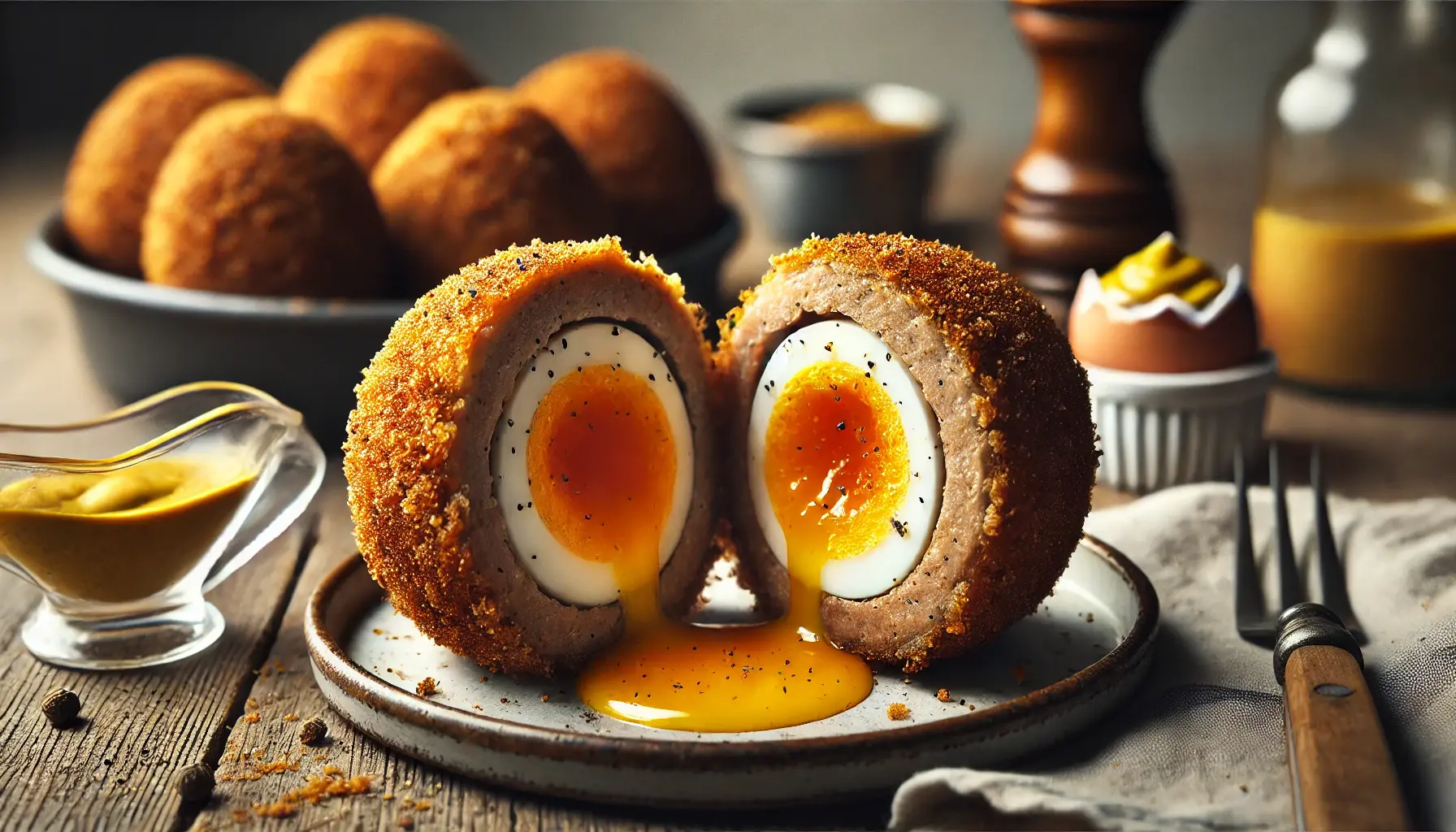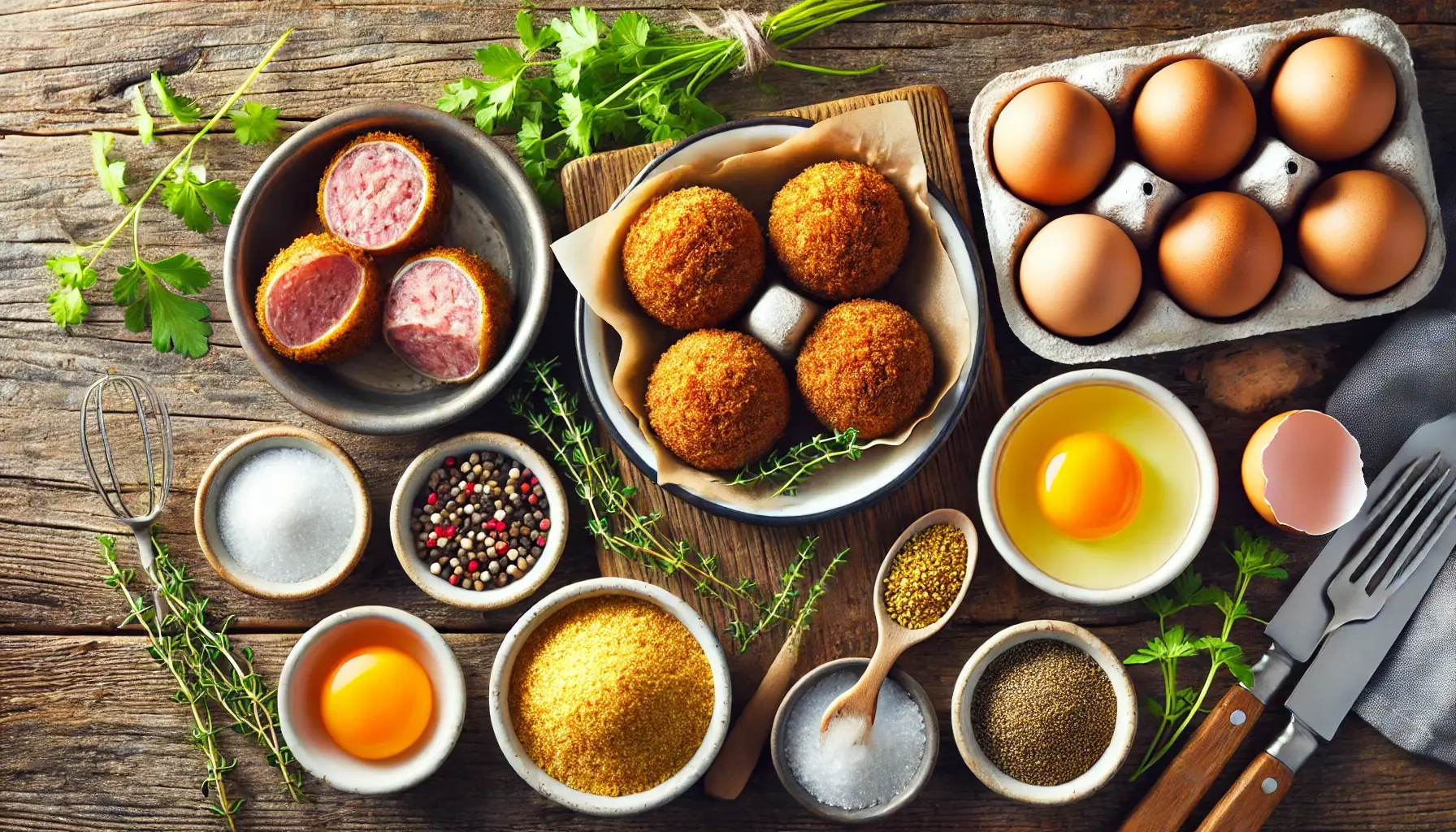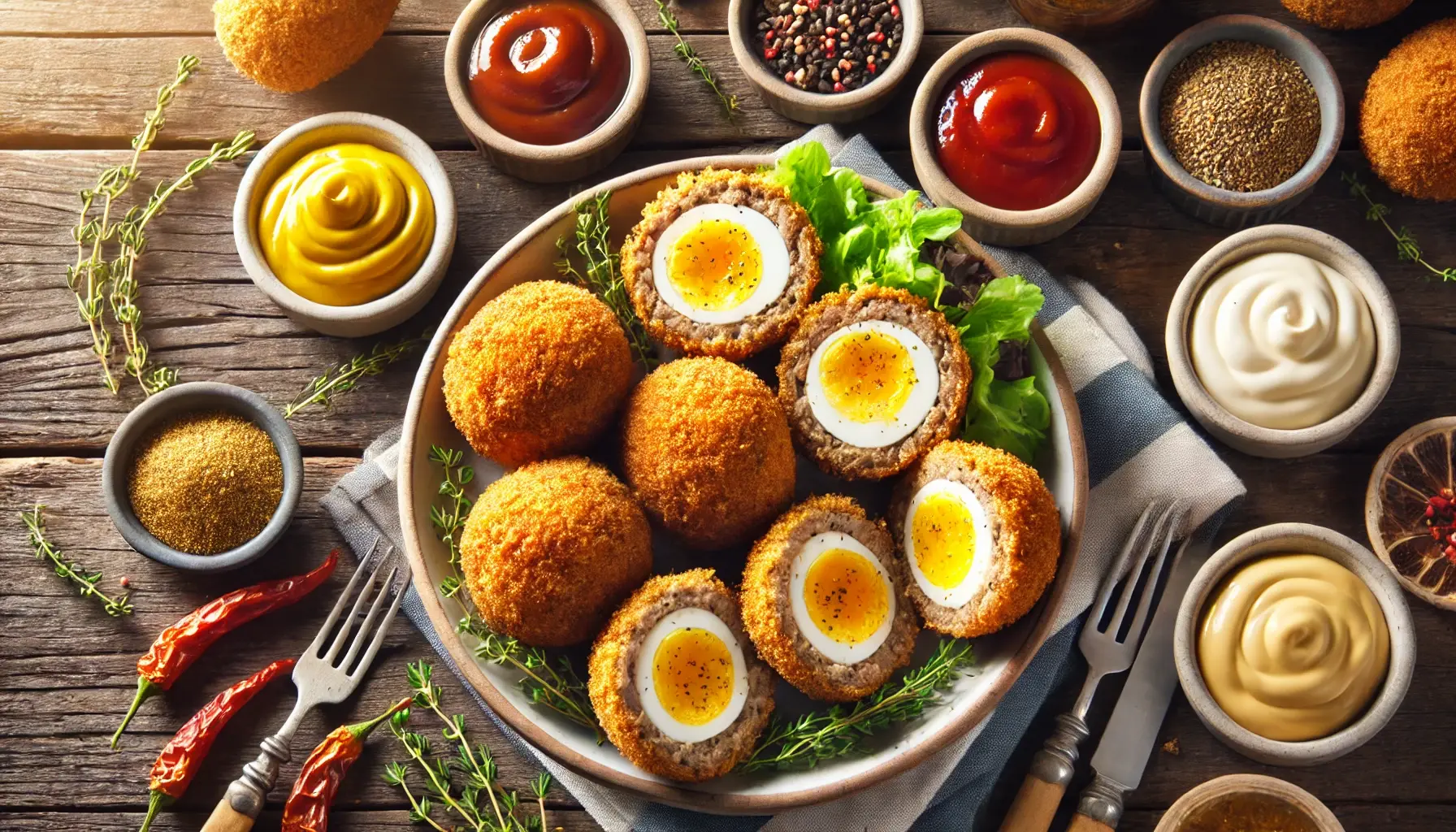Baked Scotch Egg Recipe
Introduction
Scotch eggs are a quintessentially British snack, often associated with picnics, pubs, and street food stalls. While the classic version involves deep-frying, there’s a healthier and equally delicious alternative—baked Scotch eggs. These savory delights, with their crispy exterior and rich, flavorful filling, are perfect for a quick snack, a picnic treat, or even a satisfying breakfast. This recipe will walk you through the process of making baked Scotch eggs that are crispy on the outside, with a soft-boiled egg in the middle and a sausage filling that’s full of flavor.
What is a Scotch Egg?
At its core, a Scotch egg is a hard or soft-boiled egg wrapped in sausage meat, then coated in breadcrumbs and usually fried. The dish dates back to the 18th century and is thought to have been inspired by the Indian dish "nargisi kofta." The dish has evolved over time, and while frying is the traditional method, baking offers a lighter option that doesn’t compromise on flavor or texture.

Why Bake Instead of Fry?
Baking Scotch eggs provides a healthier alternative to frying. When you fry, you soak the sausage and breadcrumbs in oil, adding unnecessary calories and fat. On the other hand, baking allows the eggs to cook evenly while keeping the sausage meat moist without excessive oil. Additionally, the outer coating crisps up beautifully in the oven, creating a delightful crunch without the added guilt.
Ingredients Needed for Baked Scotch Eggs
- 6 large eggs (boiled to your preference—soft or hard)
- 1 lb (450g) of sausage meat (choose your favorite sausage, or use a mixture of pork and herbs)
- 1 cup breadcrumbs (panko breadcrumbs work best for extra crispiness)
- 1 egg (for egg wash)
- Salt and pepper to taste
- Fresh herbs (optional—thyme, parsley, or sage work well)
- Mustard powder or other seasonings (optional for flavor)
- Cooking spray or olive oil (for greasing)

You can also experiment with vegetarian versions using plant-based sausage meat or gluten-free breadcrumbs to suit different dietary preferences.
Step-by-Step Guide to Making Baked Scotch Eggs
- Prepare the Eggs
Start by boiling your eggs. For soft-boiled eggs, cook them for 5-6 minutes, then plunge them into ice water to stop cooking. For hard-boiled eggs, cook for 9-10 minutes. Once cooled, peel the eggs and set aside. - Season the Sausage Meat
In a large bowl, combine the sausage meat with salt, pepper, and any desired seasonings. Add finely chopped herbs like parsley or thyme if you like a herby flavor. Mix the meat thoroughly, ensuring the seasoning is evenly distributed. - Wrap the Eggs in Sausage Meat
Take a portion of the seasoned sausage meat and flatten it out into a patty. Carefully wrap the patty around the boiled egg, ensuring it is completely covered. The sausage layer should be firm but not too thick—aim for about 1/4 inch thickness.
How to Coat the Scotch Eggs
- Dip in Egg Wash
Beat one egg in a shallow bowl. Roll each sausage-wrapped egg in the egg wash to help the breadcrumbs stick. - Coat with Breadcrumbs
Place the breadcrumbs in another shallow dish and roll each egg in the breadcrumbs, ensuring it’s evenly coated. You can double-coat the eggs by repeating the egg wash and breadcrumb steps for extra crunch.
Baking the Scotch Eggs
- Preheat the Oven
Set your oven to 375°F (190°C). Place a baking sheet lined with parchment paper and lightly grease it with cooking spray or olive oil. - Arrange the Eggs
Place the coated Scotch eggs on the prepared baking sheet, leaving space between them for even cooking. - Bake
Bake the Scotch eggs in the preheated oven for 25-30 minutes, or until the coating is golden brown and crispy. Insert a meat thermometer to check if the sausage is fully cooked—the internal temperature should reach 165°F (74°C).
Tips for Perfect Baked Scotch Eggs
- Even Cooking: Ensure your sausage layer is even and not too thick, as this could prevent the eggs from cooking thoroughly.
- Moisture Control: If the sausage meat is too dry, add a small amount of milk or olive oil to help bind it better.
- Resting Time: Let the eggs rest briefly before cutting into them. This helps the filling settle and keeps everything intact.
Common Mistakes to Avoid
- Overcooking the Eggs: Watch your boiling time. Overcooked eggs will make your Scotch eggs rubbery and dry.
- Underseasoning the Sausage: Don’t skimp on seasoning—the sausage meat is the show's star, so make sure it’s flavorful.
Serving Suggestions for Baked Scotch Eggs
Baked Scotch eggs are delicious on their own, but they can also be served with a variety of accompaniments:
- Dips: Try serving them with tangy mustard, sweet chili sauce, or even a creamy mayonnaise dip.
- Salads: Pair with a fresh green salad or potato salad for a more filling meal.
- Picnics and Parties: These make perfect party food, great for serving at casual gatherings.
Storage and Reheating Tips
- Storing Leftovers: You can store leftover Scotch eggs in an airtight container in the fridge for up to 3 days.
- Reheating: Reheat them in the oven at 350°F (175°C) for about 10 minutes to retain their crispiness.
Nutritional Information for Baked Scotch Eggs
A typical baked Scotch egg contains around 250-300 calories, depending on the size and ingredients. The main nutritional content comes from the protein in the eggs and sausage meat and healthy fats from the baking process.
For those following a low-carb or gluten-free diet, consider substituting the breadcrumbs with almond flour or gluten-free breadcrumbs.
Variations of the Baked Scotch Egg
- Vegetarian Scotch Eggs: Use plant-based sausage or a mixture of mashed potatoes and herbs for a vegetarian alternative.
- Spicy Scotch Eggs: Add chili flakes or a spicy sausage variety for a fiery kick.
- Global Twists: Add ingredients like curry powder for an Indian-inspired Scotch egg, or bacon bits for an extra savory flavor.
Scotch Egg History and Fun Facts
- Origin: Although Scotch eggs are widely associated with England, their exact origins are unclear. Some believe they were created by the London-based Fortnum & Mason department store in 1738.
- Popularization: The dish gained popularity in the 19th century and became a staple for British picnics.

Conclusion
Baked Scotch eggs offer a healthier yet still indulgent alternative to the traditional fried version. Whether you’re preparing them for a picnic, a brunch, or a cozy snack, these baked delights will indeed please. So, why not give this baked Scotch egg recipe a try? You’ll enjoy a delicious piece of English history in no time with a few simple ingredients and easy steps.
You may also like :
The Traditional Japanese Chicken Teriyaki Recipe
Top 10 American Recipes: Classic Comfort Foods
Spicy Southern Fried Chicken
Oreo Balls Oreo Truffles: How to prepare?
FAQs
- Can I use turkey sausage instead of pork sausage?
Yes, turkey sausage is a tremendous lower-fat alternative and works just as well in the recipe. - Can I freeze baked Scotch eggs?
Yes, you can freeze them before or after baking. Just Ensure to wrap them tightly and store them in an airtight container. - How can I make the Scotch eggs spicier?
Add chili flakes and hot sauce, or use a spicy sausage to give them an extra kick. - Can I bake Scotch eggs with raw egg yolks?
You can, but monitoring cooking time closely is essential to avoid undercooking. - What’s the best way to serve Scotch eggs at a party?
Serve them sliced into halves or quarters with various dipping sauces for a fun and interactive snack.




